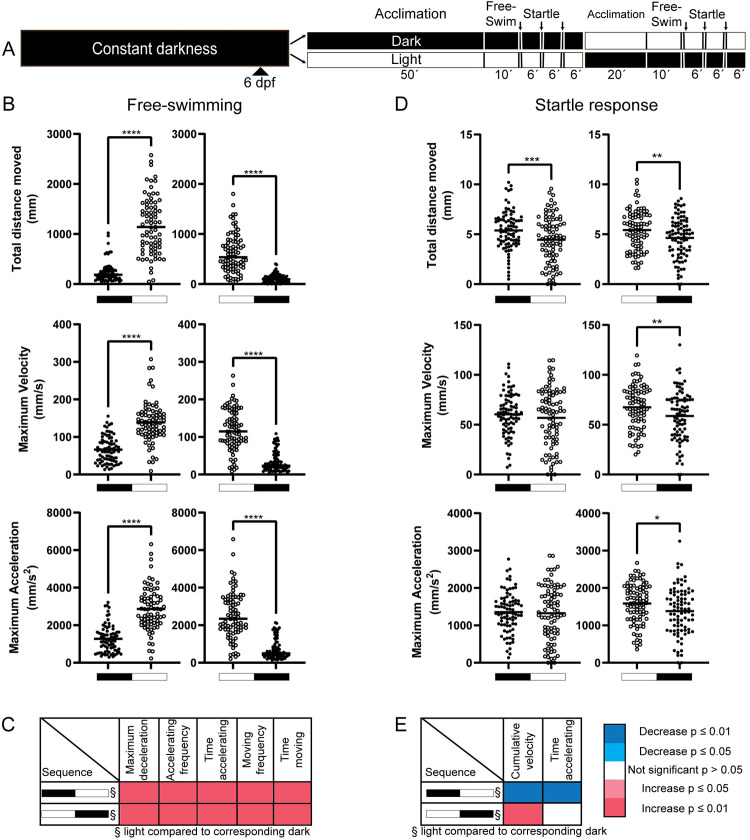Fig 2
(A) Schematic of the experimental procedure. Embryos were kept under constant darkness (solid black bar) until the behavioral experiments. Each behavioral section had two components; free-swimming for 10 min under light (open circles; white) or dark (solid circles; black) conditions after a 50 min acclimation period under same illumination condition, and a set of startle responses (280 ms) where a sequence of three taps was executed with 6-minute interval; arrows designate timing of taps. For the sequential illumination test, larvae were given a 20-min acclimation period prior to assessing behavior under the illumination condition opposite to initial one. (B, C) Regardless of the order of illumination, larvae showed significantly more activity during free-swimming when tested under light conditions, compared to dark test conditions. (D, E) In terms of startle response behavior, almost all parameters decreased in second condition (regardless of illumination) representing potential habituation effect. Free-swimming: n = 76–86 per group, startle response: n = 85–87 per group. Data is presented in scatterplots showing individual values and group mean or median. Analysis was performed with paired t-tests. Significance: *p ≤ 0.05, **p ≤ 0.01, ***p ≤ 0.001, ****p ≤ 0.0001.

